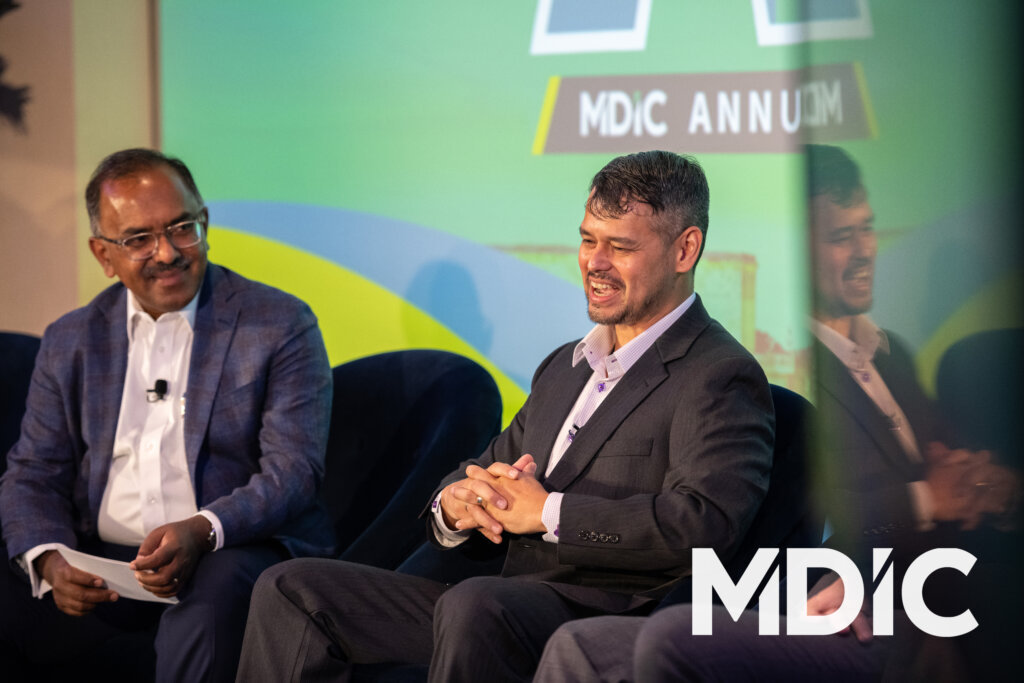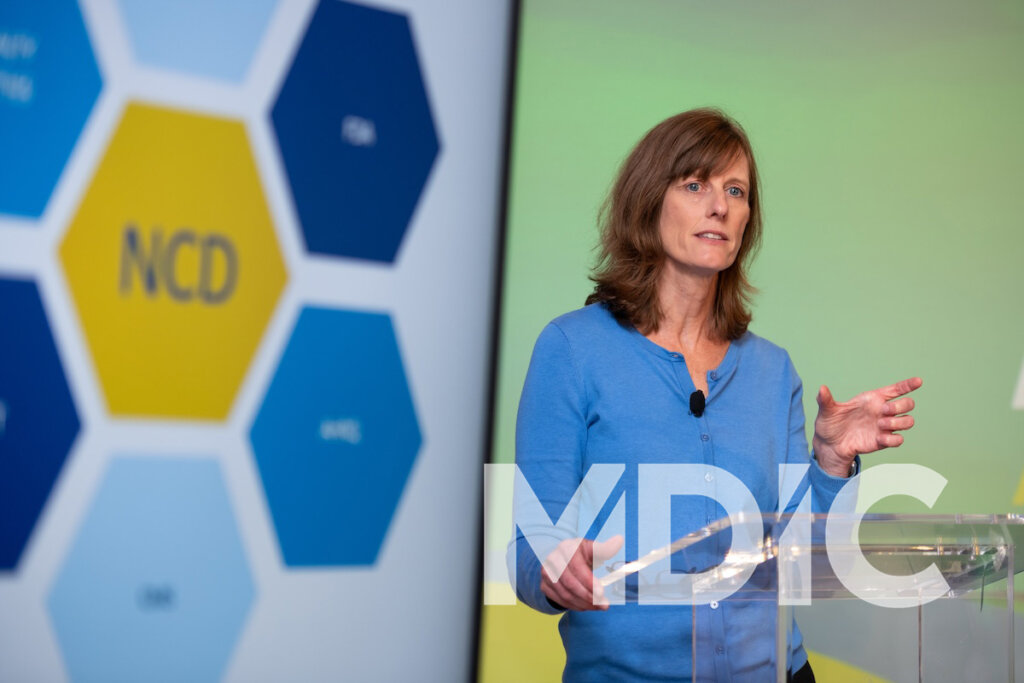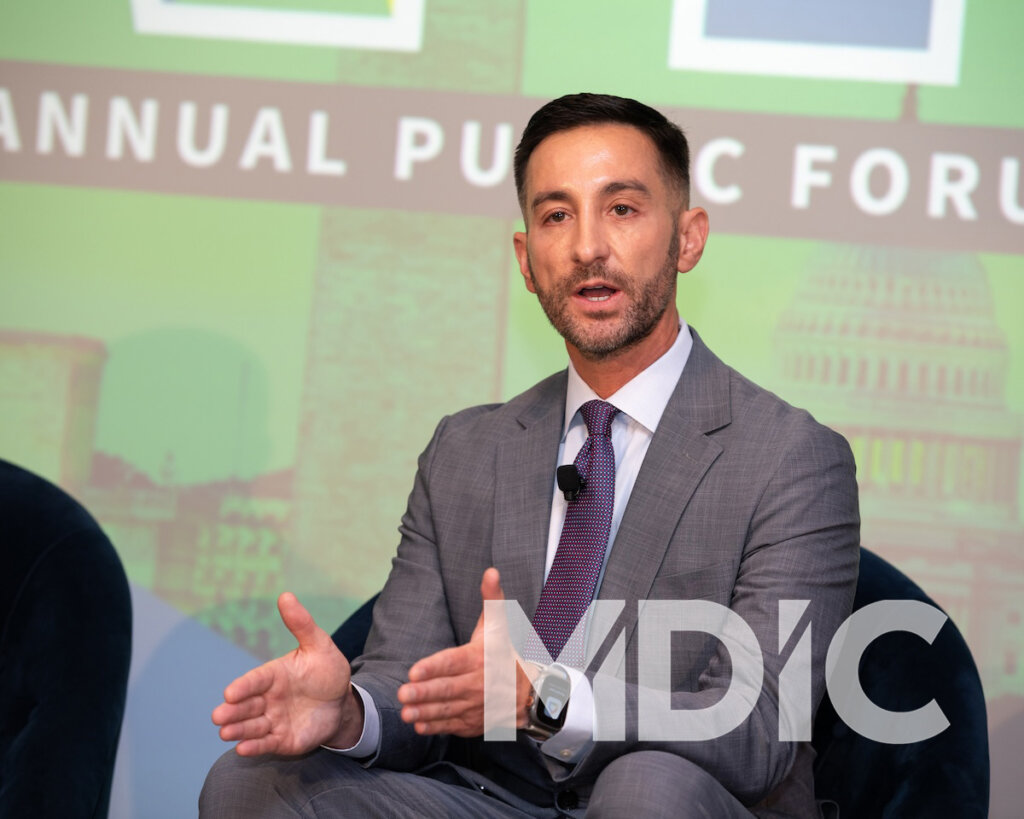Accelerating Impact with the NEST
An emerging player in the landscape of medical device approval is NEST, which was “designed to be a bridge between regulators, industry, and patients, leveraging real-world evidence to drive faster, safer regulatory submissions,” said Simon Mason, President of NEST.
Since its inception in 2016, NEST has brought together diverse stakeholders—from patient advocacy groups to the FDA and CMS—to create a collaborative framework for supporting the process and enhancing the quality of submissions for approval of new medical devices. Daniel Caños, director, Office of Clinical Evidence and Analysis, Office of Product Evaluation and Quality at the FDA, highlighted the critical role NEST plays: “NEST provides the FDA with invaluable real-world data to ensure safety and effectiveness, but its collaborative approach is what makes it truly impactful.”

Through enhanced cooperation between regulators and industry, NEST ensures that RWE from clinical practice can be used in parallel with clinical trials, helping to identify safety issues earlier in the approval process. NEST has now supported more than 30 test cases in various therapeutic areas, including pediatrics and decentralized research, contributing to significant advancements in device approvals.
As the industry progresses, NEST is poised to be a key player in guiding the future of RWE and medical device evaluations.
CMS’s Role in Real-World Evidence Adoption
One of the key players in the adoption of RWE is CMS. Tamara Syrek Jensen, director of the Coverage and Analysis Group at CMS, highlighted Medicare’s critical influence on the future of medical device coverage. She stressed the need for transparent and predictable processes as medical technologies evolve at a rapid pace, noting “CMS is working to refine its evaluation of RWE for coverage decisions, particularly in areas like digital therapeutics and breakthrough medical devices.” This evolution signifies a shift in how innovation is brought to patients, ensuring that advancements in technology meet the highest standards of care while making the pathway from development to coverage more efficient.

TCET and the New Frontier of Medicare Coverage
In an era where medical technology innovation moves rapidly, securing patient access is crucial. The discussion around the Transitional Coverage for Emerging Technologies (TCET) guidance further emphasized CMS’s dedication to improving access to breakthrough medical devices.
Steve Farmer, chief strategy officer for CMS, and Lindsay Bockstedt, vice president of health economics at Medtronic, unpacked the ways TCET aims to resolve previous challenges left unaddressed by earlier programs like MCIT. TCET creates a clear and dependable pathway for Medicare coverage requests, offering greater predictability and reducing uncertainty for companies bringing emerging technologies to market.

TCET offers “evidence previews,” where manufacturers can collaborate with CMS during product development. Early-stage companies have expressed concerns about adapting their clinical studies to align with RWE requirements. CMS has confronted this issue by incorporating tools such as the “picture book protocol” template applicable to manufacturers. TCET’s long-term potential extends beyond Medicare, setting the stage for broader advancements across the industry.
Harnessing AI for Personalized Care
The medical device industry is witnessing unprecedented growth, with emerging technological advancements rapidly transforming what is possible on the healthcare horizon. As Dr. Ken Stein, senior vice president and global chief medical officer at Boston Scientific, pointed out, “The doubling time of medical literature has shrunk from seven years to just 73 days.” This explosion of information offers tremendous opportunities for innovation but also presents challenges in keeping up with the latest research.
Advances in AI are playing a pivotal role in addressing these challenges. AI is enabling more personalized care, especially through wearable devices and home-based health monitoring. Stein illustrated the potential, sharing an example of a patch-based EKG monitor that records 1.4 million heartbeats over 14 days. “You could not possibly do that without an AI screen,” he noted, emphasizing AI’s ability to handle large data sets in support of improving patient outcomes. AI-driven diagnostics in wearables have significantly reduced the time needed to detect conditions such as atrial fibrillation, leading to earlier interventions and improved patient outcomes.

Innovation Frontiers panel session at APF 2024
Looking Ahead: Accelerating Innovation While Safeguarding Patients
Accelerating access to life-saving technologies while ensuring patient safety lies at the intersection of RWE and AI. Initiatives including NEST and TCET have proven that incorporating RWE into the approval process can cut review times by months, ensuring that breakthrough devices reach patients sooner. Meanwhile, AI is enhancing the industry’s ability to handle vast datasets, enabling more personalized and timely care.
By fostering collaboration between industry, regulators, and healthcare providers, the medical device industry can continue to push boundaries while keeping patient safety at the forefront.